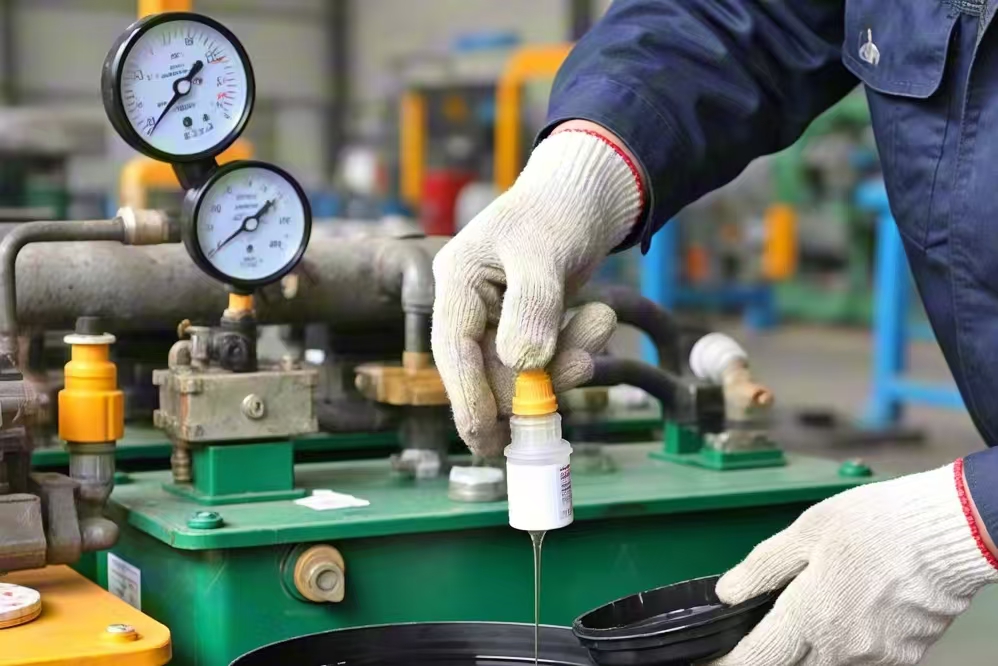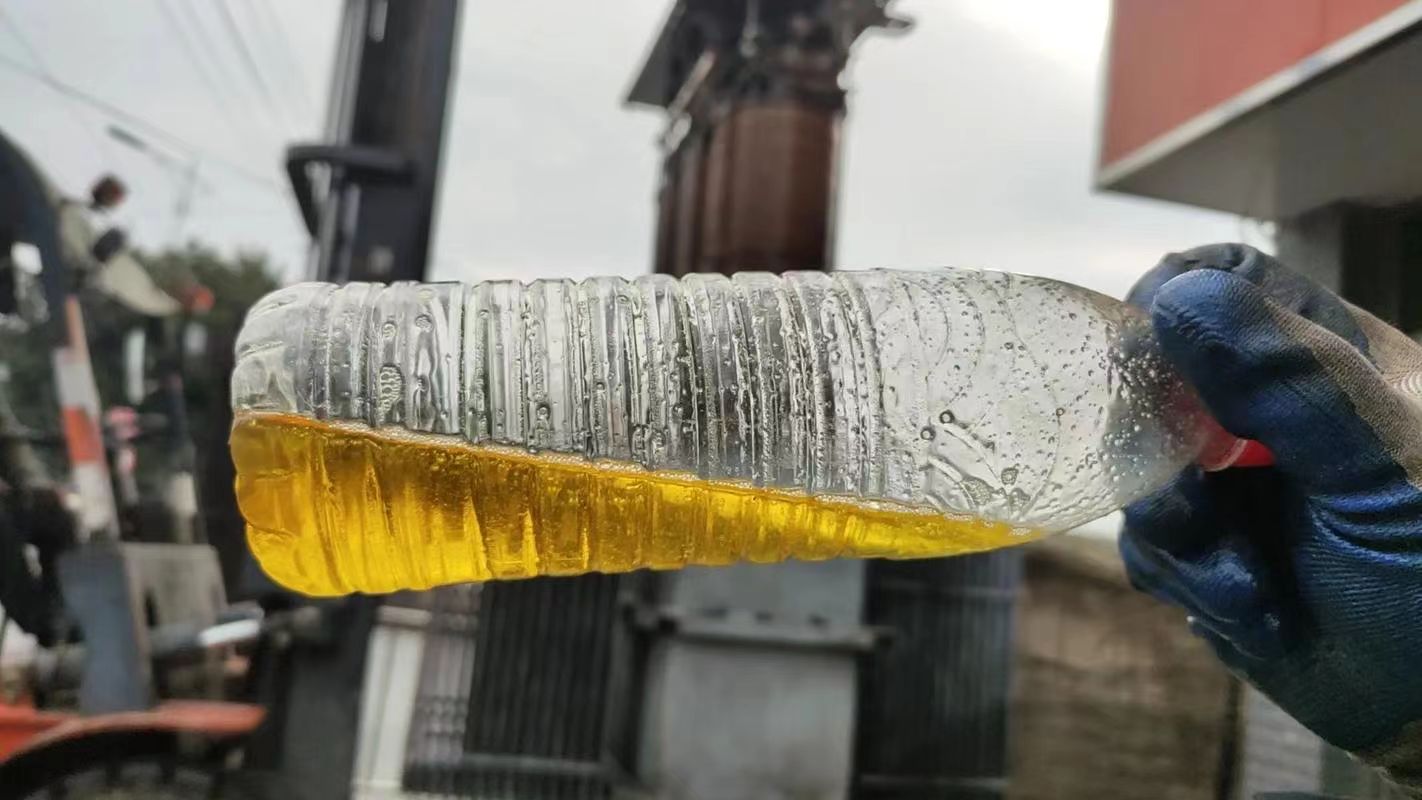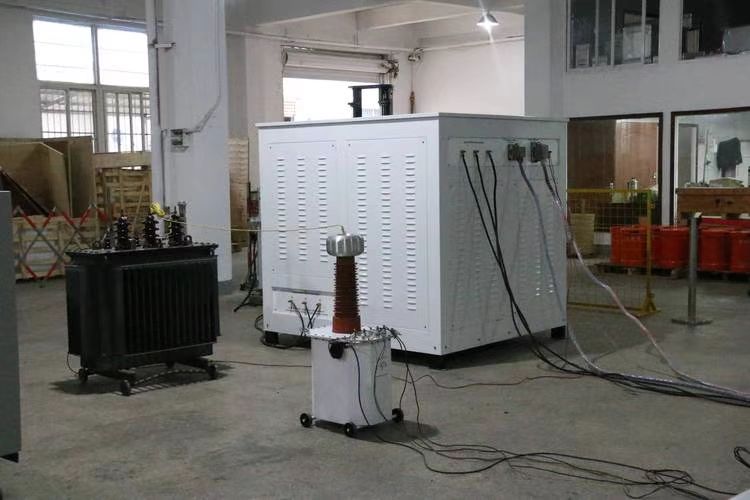In the world of power transformers, insulating oil is much more than just a filler material — it is a critical component that ensures the reliable and safe operation of the equipment. Acting both as an electrical insulator and a cooling medium, transformer oil plays a vital role in maintaining performance, prolonging lifespan, and preventing failures. This article will explore the various functions of insulating oil, the characteristics that make it indispensable, and the maintenance practices that keep transformers operating efficiently.
What Functions Does Insulating Oil Perform in Transformers?

Insulating oil is an essential component in oil-immersed transformers, performing multiple critical roles that ensure the transformer’s safe operation, thermal management, dielectric integrity, and long service life. Beyond simple cooling or insulation, transformer oil actively supports fault prevention, aging resistance, and system reliability. Without properly functioning insulating oil, a transformer’s performance would degrade rapidly, leading to overheating, dielectric failure, or catastrophic breakdown.
In this article, we will explore in-depth the functions insulating oil performs in transformers, highlighting why it is indispensable and how it contributes to the efficiency and stability of electrical systems.
1. Electrical Insulation
| Function | Description |
|---|---|
| Insulates conductive parts | Prevents electrical short-circuits between high-voltage windings, low-voltage windings, and the grounded core/tank. |
| Fills small gaps | Enhances dielectric strength where solid insulation cannot reach completely. |
Importance:
- Maintains electrical separation between parts operating at different potentials.
- Improves overall dielectric strength of the transformer system.
- Prevents flashovers and breakdowns inside the tank.
Transformer oil typically has a dielectric strength exceeding 30 kV (rms) per 2.5 mm gap when fresh and uncontaminated.
2. Cooling and Heat Dissipation
| Function | Description |
|---|---|
| Heat absorption | Oil absorbs heat generated by winding losses (copper losses) and core losses. |
| Convection circulation | Transfers heat to the radiator or external cooling fins where it dissipates to the environment. |
Importance:
- Controls winding and core temperatures, preventing thermal degradation.
- Ensures continuous operation even under heavy loads.
- Extends insulation life by reducing the rate of aging.
Transformer cooling types like ONAN, ONAF, and OFAF depend on oil circulation for effective thermal management.
3. Moisture Protection
| Function | Description |
|---|---|
| Acts as a moisture barrier | Prevents water vapor from reaching solid insulation like cellulose paper. |
| Absorbs minimal moisture | Maintains very low water content to sustain dielectric properties. |
Importance:
- Moisture in the transformer drastically reduces insulation strength and accelerates aging.
- Oil acts as a first line of defense against moisture ingress through bushings, seals, or breathers.
Properly maintained oil has moisture content less than 10–20 ppm (parts per million) to ensure high dielectric reliability.
4. Arc Quenching and Fault Suppression
| Function | Description |
|---|---|
| Suppresses arcing | Provides medium to extinguish small arcs during minor dielectric disturbances or switching events. |
| Damps internal discharges | Minimizes damage caused by partial discharges and electrical faults. |
Importance:
- Reduces mechanical and thermal stress during abnormal conditions.
- Prevents minor internal faults from developing into major failures.
In sudden short circuits or switching surges, insulating oil helps to stabilize the system internally before protection devices act.
5. Preservation of Solid Insulation
| Function | Description |
|---|---|
| Reduces oxidative degradation | Oil shields cellulose and other solid insulations from direct exposure to oxygen. |
| Acts as a chemical buffer | Slows down the aging of solid insulation materials. |
Importance:
- The life of the transformer largely depends on the life of the solid insulation, which insulating oil helps to preserve.
- Reduces the need for early transformer replacements due to insulation failure.
6. Diagnostic Medium for Condition Monitoring
| Function | Description |
|---|---|
| Medium for Dissolved Gas Analysis (DGA) | Allows detection of fault gases produced by arcing, overheating, or partial discharge. |
| Oil quality testing | Regular tests on oil acidity, moisture, and dielectric strength indicate internal health. |
Importance:
- Acts as a diagnostic tool for proactive maintenance.
- Provides early warning of internal faults, avoiding catastrophic failures.
DGA is one of the most powerful predictive maintenance techniques in transformer fleet management.
ClaimReview Fact Check
Insulating oil in transformers provides electrical insulation, cooling, moisture protection, arc suppression, and a medium for fault detection through dissolved gas analysis.True
Transformer oil is indispensable for maintaining dielectric integrity, thermal management, insulation preservation, fault suppression, and enabling predictive diagnostics, ensuring reliable and long-lasting transformer operation.
7. Summary Table: Functions of Insulating Oil in Transformers
| Function | Impact |
|---|---|
| Electrical Insulation | Prevents internal arcing and short-circuits. |
| Cooling and Heat Dissipation | Controls winding/core temperatures and extends life. |
| Moisture Protection | Maintains dielectric strength and insulation reliability. |
| Arc Quenching and Fault Suppression | Reduces mechanical and electrical fault damage. |
| Preservation of Solid Insulation | Slows down aging of paper insulation and extends transformer life. |
| Diagnostic Medium (DGA) | Enables fault detection and predictive maintenance. |
What Properties Make a Good Transformer Insulating Oil?
A good transformer insulating oil must possess a unique combination of electrical, thermal, chemical, and physical properties to ensure long-lasting, safe, and efficient transformer operation. The oil is not just a passive medium—it actively insulates, cools, protects, and monitors the health of the transformer. Poor-quality oil can lead to insulation failure, overheating, moisture ingress, or catastrophic breakdown, making the selection and maintenance of insulating oil absolutely critical.
In this article, we detail the essential properties that define a good transformer insulating oil, explaining their significance in maintaining transformer performance and reliability.
1. High Dielectric Strength
| Property | Explanation |
|---|---|
| Dielectric Strength | The maximum electric field the oil can withstand without breaking down. Measured in kilovolts (kV). |
Importance:
- Prevents internal arcing and flashovers between energized parts.
- Maintains electrical insulation under high-voltage stresses.
Typical Requirement:
- Fresh insulating oil: ≥30 kV for a 2.5 mm gap.
- Higher dielectric strength equals better protection against short circuits.
2. Low Moisture Content
| Property | Explanation |
|---|---|
| Moisture Resistance | Oil should absorb minimal water vapor from the environment. |
Importance:
- Water reduces oil’s dielectric strength drastically.
- Increases risk of partial discharges, breakdowns, and insulation aging.
Ideal Specification:
- Moisture content: less than 10–20 ppm for new oils.
Moisture control is critical for preserving both electrical and mechanical integrity.
3. Excellent Thermal Conductivity
| Property | Explanation |
|---|---|
| Thermal Conductivity | Ability of the oil to absorb and dissipate heat efficiently from the core and windings. |
Importance:
- Prevents hot spots in windings.
- Extends lifespan of both liquid and solid insulation.
High thermal performance supports stable operation under heavy or fluctuating loads.
4. High Oxidation Resistance
| Property | Explanation |
|---|---|
| Oxidation Stability | Oil’s ability to resist chemical degradation when exposed to oxygen at elevated temperatures. |
Importance:
- Prevents formation of sludge, acids, and insoluble deposits.
- Maintains fluidity, heat transfer capability, and dielectric properties over time.
Good oils contain oxidation inhibitors or are naturally resistant to oxidation.
5. Low Viscosity
| Property | Explanation |
|---|---|
| Viscosity | Resistance to flow; lower values allow better convection currents. |
Importance:
- Enhances cooling efficiency through faster circulation.
- Supports quick heat removal from critical components.
Typical Requirement:
- Viscosity measured at 40°C and must comply with design-specific standards (e.g., ASTM D3487, IEC 60296).
6. High Flash Point and Fire Point
| Property | Explanation |
|---|---|
| Flash Point | Temperature at which oil vapors ignite momentarily. |
| Fire Point | Temperature at which sustained combustion occurs. |
Importance:
- Reduces risk of transformer fires under fault conditions.
- Ensures safe operation even in high-temperature environments.
Typical Values:
- Flash point: >140°C.
- Fire point: >160°C.
High fire safety parameters are vital, especially for urban, indoor, and sensitive installations.
7. Chemical Stability and Low Acidity
| Property | Explanation |
|---|---|
| Chemical Stability | Resistance to chemical reactions under operating conditions. |
| Low Acidity | Low acid number (typically <0.03 mg KOH/g for new oil). |
Importance:
- Protects metallic parts from corrosion.
- Preserves paper insulation from acid attack.
Acid buildup is a key aging mechanism that oils must resist to ensure transformer longevity.
8. Low Pour Point
| Property | Explanation |
|---|---|
| Pour Point | Lowest temperature at which the oil remains fluid. |
Importance:
- Ensures reliable transformer operation in cold climates.
- Prevents oil solidification that could impair cooling and insulation.
Typical Target:
- Pour point below –30°C to –40°C for transformers in colder regions.
ClaimReview Fact Check
Good transformer insulating oil must have high dielectric strength, low moisture content, excellent thermal conductivity, high oxidation resistance, low viscosity, high fire safety, chemical stability, and a low pour point.True
These properties ensure that insulating oil maintains electrical insulation, effective cooling, oxidation resistance, and safety under all operating conditions, directly supporting transformer efficiency and reliability.
9. Summary Table: Key Properties of Good Transformer Insulating Oil
| Property | Significance |
|---|---|
| High Dielectric Strength | Ensures electrical insulation between live parts. |
| Low Moisture Content | Maintains dielectric reliability. |
| Excellent Thermal Conductivity | Efficiently removes heat from transformer core and windings. |
| High Oxidation Resistance | Prevents sludge, acids, and preserves fluid quality. |
| Low Viscosity | Supports fast oil circulation for effective cooling. |
| High Flash and Fire Points | Reduces fire risks in fault scenarios. |
| Chemical Stability and Low Acidity | Extends the life of transformer components. |
| Low Pour Point | Enables reliable operation in cold conditions. |
How Does Insulating Oil Help Manage Transformer Temperature?

Insulating oil plays a critical role in managing transformer temperature, beyond its well-known function as an electrical insulator. In oil-immersed transformers, the insulating oil acts as a thermal management medium—absorbing heat generated by copper (winding) losses and core (iron) losses, circulating it away from hot spots, and dissipating it through external cooling systems like radiators and fans.
Effective thermal management by insulating oil is essential for maintaining transformer efficiency, extending insulation life, and preventing catastrophic overheating and failures.
In this article, we explain in detail how insulating oil helps manage transformer temperature, including mechanisms, influencing factors, and design considerations.
1. Heat Absorption
| Function | Explanation |
|---|---|
| Direct contact with heat sources | Insulating oil fills all voids around windings and core, immediately absorbing heat produced by electrical losses. |
| High specific heat capacity | Allows the oil to absorb significant amounts of heat without large temperature rise. |
Importance:
- Prevents the development of dangerous hot spots in windings and core laminations.
- Maintains stable internal temperatures under varying load conditions.
Result:
- Reduced thermal stress on insulation and conductors.
2. Heat Transport by Natural or Forced Circulation
| Mechanism | Description |
|---|---|
| Natural Convection | Heated oil becomes less dense, rises, and cooler oil flows downward to replace it, setting up a circulation pattern. |
| Forced Circulation | Pumps or fans move the oil faster to improve heat transfer efficiency in large or heavily loaded transformers. |
Importance:
- Ensures continuous movement of heat from internal components to external cooling surfaces.
- Avoids localized overheating.
Typical Cooling Modes:
- ONAN (Oil Natural Air Natural)
- ONAF (Oil Natural Air Forced)
- OFAF (Oil Forced Air Forced)
3. Heat Dissipation through Radiators and Heat Exchangers
| Component | Function |
|---|---|
| Radiators | Large surface area units where heated oil releases heat to surrounding air. |
| Oil-to-Air Coolers | Use forced air to boost cooling efficiency. |
| Oil-to-Water Heat Exchangers | Used in extremely large transformers for high-efficiency cooling. |
Importance:
- Rapid dissipation of heat maintains lower bulk oil temperatures.
- Ensures windings and core stay within safe operating temperature limits.
4. Enhancing Cooling Efficiency: Oil Properties That Matter
| Oil Property | Cooling Impact |
|---|---|
| Low viscosity | Facilitates faster and more uniform oil circulation. |
| High thermal conductivity | Improves the rate at which heat is absorbed and transferred. |
| High specific heat | Allows oil to absorb more heat energy before its temperature rises significantly. |
Well-maintained oil retains optimal properties, ensuring efficient heat management throughout the transformer's life.
5. Managing Temperature in Different Transformer Zones
| Zone | Cooling Strategy |
|---|---|
| Windings | Direct oil contact extracts heat from conductors. |
| Core | Oil absorbs heat generated by eddy currents and hysteresis losses. |
| Tank Walls and Radiators | Oil releases absorbed heat to the external environment. |
Critical Focus:
- Managing hot-spot temperatures is more important than average temperatures because hot spots dictate insulation aging and service life.
6. Temperature Monitoring and Control Systems
| Monitoring Device | Purpose |
|---|---|
| Top Oil Temperature Sensors | Measure the hottest oil temperature inside the transformer. |
| Winding Hot-Spot Sensors | Predict the maximum conductor temperature. |
| Thermostats and Alarms | Trigger cooling systems or protective trips if temperatures exceed safe limits. |
Importance:
- Helps optimize loading strategies.
- Prevents overload-induced failures by early detection of temperature rise.
Smart temperature control systems dynamically adjust cooling fan and pump speeds based on real-time oil temperature measurements.
ClaimReview Fact Check
Insulating oil manages transformer temperature by absorbing heat from the windings and core, transporting it via convection, and dissipating it through radiators or heat exchangers.True
Insulating oil's thermal properties and circulation mechanisms are essential to maintaining safe operating temperatures, preventing insulation degradation, and extending transformer life.
7. Summary Table: How Insulating Oil Manages Transformer Temperature
| Function | Cooling Mechanism |
|---|---|
| Absorbs heat from hot components | High specific heat and thermal conductivity. |
| Transports heat to external surfaces | Natural or forced convection circulation. |
| Dissipates heat to the environment | Radiators, fans, or heat exchangers. |
| Maintains safe temperatures | Ensures hot-spot and bulk temperatures stay within design limits. |
| Enables real-time monitoring | Sensors and alarms protect against overheating. |
What Happens When Transformer Oil Deteriorates?
When transformer oil deteriorates, it loses its essential insulating and cooling properties, leading to serious operational and safety risks. Deteriorated oil can cause reduced dielectric strength, increased temperature, accelerated insulation aging, internal arcing, and eventually catastrophic transformer failure. Understanding the consequences of oil degradation is crucial for preventive maintenance, risk management, and extending transformer life.
In this article, we explain in depth what happens when transformer oil deteriorates, the mechanisms behind the deterioration, warning signs, and the severe impacts on transformer performance and safety.
1. Decrease in Dielectric Strength
| Effect | Explanation |
|---|---|
| Lower electrical insulation capacity | Oil contaminated with moisture, acids, and particulates loses its ability to withstand high voltages. |
| Higher risk of flashovers and internal breakdowns | Reduced dielectric strength leads to electrical discharges within the transformer. |
Importance:
- Increases the likelihood of phase-to-phase or phase-to-ground short circuits.
- Significantly compromises transformer reliability and grid stability.
Typical Critical Threshold:
- Fresh oil dielectric strength: ≥30 kV (2.5 mm gap).
- Action needed if strength falls below 20–25 kV.
2. Formation of Sludge
| Effect | Explanation |
|---|---|
| Oxidation of oil produces sludge | By-products of oil aging (organic acids, oxidized hydrocarbons) form sticky, insoluble sludge. |
| Sludge deposition in cooling channels | Blocks oil circulation, impairs cooling efficiency. |
Consequences:
- Hot spots develop in windings and core.
- Accelerated thermal aging of insulation materials.
- Reduced transformer load-carrying capacity.
3. Increase in Acidity (Acid Number Rise)
| Effect | Explanation |
|---|---|
| Acids produced by oxidation | Lead to chemical attacks on paper insulation and metal parts. |
| Increase in total acid number (TAN) | Measured as mg of KOH needed to neutralize acids in 1g of oil. |
Importance:
- Acidic oils degrade cellulose insulation much faster.
- Promote corrosion of copper windings, iron core, and tank components.
Critical Acid Number Values:
- Good oil: TAN < 0.03 mg KOH/g.
- Oil with TAN > 0.3 mg KOH/g needs urgent reclamation or replacement.
4. Moisture Absorption and Hydrolysis
| Effect | Explanation |
|---|---|
| Deteriorated oil absorbs moisture | Reduces dielectric strength drastically. |
| Hydrolysis reactions | Water reacts with oil molecules, further degrading oil quality. |
Consequences:
- Moisture accelerates partial discharge and tracking phenomena.
- Risk of bubble formation under high temperatures, leading to flashovers.
5. Increased Risk of Partial Discharges and Internal Arcing
| Effect | Explanation |
|---|---|
| Lower insulation integrity | Localized high electric fields can cause discharges within oil gaps or insulation defects. |
| Accumulation of free gases | Arcing generates combustible gases like hydrogen, methane, and ethylene. |
Indicators:
- Detected via Dissolved Gas Analysis (DGA).
- Increase in gases signals incipient faults or advanced oil deterioration.
6. Overheating Due to Impaired Cooling
| Effect | Explanation |
|---|---|
| Degraded oil viscosity | Reduces oil flow rates, hampering natural or forced convection cooling. |
| Sludge blockage | Clogs cooling radiators and impairs heat dissipation. |
Result:
- Elevated winding temperatures.
- Accelerated insulation aging.
- Greater risk of thermal runaway and transformer failure.
7. Corrosion of Internal Metal Components
| Effect | Explanation |
|---|---|
| Acidic and oxidative products attack metals | Leads to pitting, cracking, and weakening of structural and electrical components. |
| Catalytic degradation | Corroded copper further accelerates oil aging in a vicious cycle. |
Impact:
- Weakens winding conductors and connection terminals.
- Shortens mechanical durability of the transformer.
ClaimReview Fact Check
Deteriorated transformer oil leads to reduced dielectric strength, sludge formation, increased acidity, moisture accumulation, overheating, partial discharges, and corrosion, endangering transformer safety and performance.True
Oil degradation affects insulation, cooling, chemical stability, and protection against faults, necessitating regular oil testing and maintenance to ensure transformer reliability and longevity.
8. Summary Table: Effects of Transformer Oil Deterioration
| Effect | Consequence |
|---|---|
| Decreased dielectric strength | Higher risk of internal electrical failures. |
| Sludge formation | Reduced cooling efficiency, overheating. |
| Increased acidity | Faster insulation aging and metal corrosion. |
| Moisture absorption | Loss of insulation properties, partial discharges. |
| Partial discharges and arcing | Gas formation, damage to solid insulation. |
| Cooling system impairment | Hot spots, thermal aging, reduced lifespan. |
| Metal corrosion | Mechanical and electrical weakness. |
How is the Quality of Transformer Oil Tested and Monitored?

Testing and monitoring transformer oil quality is essential for ensuring transformer reliability, preventing insulation failure, and extending operational life. Transformer oil gradually deteriorates due to thermal stress, oxidation, moisture ingress, and contamination.
Regular testing and analysis allow early detection of oil degradation and internal transformer faults, enabling proactive maintenance instead of costly reactive repairs or catastrophic failures.
In this article, we will comprehensively explain how transformer oil quality is tested and monitored, including key methods, critical parameters, and interpretation practices.
1. Dielectric Strength (Breakdown Voltage Test)
| Purpose | Why It’s Important |
|---|---|
| Measures insulating capability | Assesses oil’s ability to withstand electrical stress without breaking down. |
Test Procedure:
- Oil sample placed between two standardized electrodes.
- Voltage is applied and increased steadily until breakdown occurs.
- Test repeated multiple times to ensure repeatability.
Standard Limits:
- New oil: ≥30 kV.
- Used oil (in service): Minimum acceptable typically ≥25 kV.
Low dielectric strength indicates contamination by moisture, particles, or degradation products.
2. Moisture Content (Water Analysis)
| Purpose | Why It’s Important |
|---|---|
| Measures water dissolved in oil | Water drastically lowers dielectric strength and accelerates insulation aging. |
Test Methods:
- Karl Fischer titration (most accurate).
- Dean and Stark distillation (alternative for bulk water analysis).
Acceptable Values:
- New oil: <10 ppm.
- In-service oil: ideally <20–30 ppm.
Moisture detection is critical, especially for transformers exposed to variable environmental conditions.
3. Acidity Test (Neutralization Number or TAN Test)
| Purpose | Why It’s Important |
|---|---|
| Measures acid buildup in oil | Acids promote insulation degradation and corrosion of metallic parts. |
Test Procedure:
- Oil is titrated with a potassium hydroxide (KOH) solution.
- Results expressed in mg KOH per gram of oil.
Typical Limits:
- New oil: <0.03 mg KOH/g.
- Service oil action point: ≥0.1–0.3 mg KOH/g.
High acidity means oxidation, and calls for either oil reclamation or replacement.
4. Dissolved Gas Analysis (DGA)
| Purpose | Why It’s Important |
|---|---|
| Detects fault gases dissolved in oil | Gases like hydrogen, methane, ethylene indicate arcing, overheating, or partial discharges. |
Test Procedure:
- Extract dissolved gases.
- Analyze gas concentrations using gas chromatography.
Critical Gases Monitored:
- Hydrogen (H₂): Partial discharges.
- Methane (CH₄), Ethylene (C₂H₄): Overheating.
- Acetylene (C₂H₂): Arcing.
DGA is one of the most powerful early-warning tools for transformer condition monitoring.
5. Interfacial Tension (IFT) Test
| Purpose | Why It’s Important |
|---|---|
| Measures tension between oil and water | Indicates oil contamination and degradation. |
Test Result Interpretation:
- High IFT (>40 mN/m): Good oil quality.
- Low IFT (<20 mN/m): Significant contamination or oxidation products.
IFT decline signals oil aging long before breakdown occurs.
6. Flash Point and Fire Point Testing
| Purpose | Why It’s Important |
|---|---|
| Measures oil ignition temperatures | Assesses fire risk associated with oil degradation. |
Typical Values:
- Flash Point: >140°C.
- Fire Point: >160°C.
Lower values indicate contamination by volatile degradation products or external contamination.
7. Color and Appearance Inspection
| Purpose | Why It’s Important |
|---|---|
| Visual and spectrophotometric inspection | Quick initial indicator of oxidation or contamination. |
Observations:
- Good oil: Clear, light-colored.
- Aged oil: Darkened, cloudy, or with particulate matter.
Color changes suggest further chemical testing is needed.
8. Frequency of Transformer Oil Testing
| Condition | Recommended Testing Interval |
|---|---|
| New transformers | Baseline testing before commissioning. |
| Normal operating transformers | Once every 12 months (routine DGA and dielectric strength). |
| Critical transformers | Every 6 months, especially for high-voltage or heavily loaded units. |
| Suspected faults or aging units | As required based on preliminary signs like temperature rise, DGA alarms, or oil color changes. |
More frequent testing reduces the risk of unexpected failures.
ClaimReview Fact Check
Transformer oil quality is tested and monitored by measuring dielectric strength, moisture content, acidity, dissolved gases, interfacial tension, flash point, and visual appearance, ensuring insulation and cooling performance are maintained.True
Systematic oil testing detects early degradation, moisture ingress, chemical contamination, and internal faults, allowing preventive maintenance and prolonging transformer life.
9. Summary Table: Key Transformer Oil Tests and Their Purpose
| Test | Purpose |
|---|---|
| Dielectric Strength | Checks electrical insulation performance. |
| Moisture Content | Detects water contamination. |
| Acidity (TAN) | Measures oil oxidation and aging. |
| Dissolved Gas Analysis (DGA) | Detects internal faults and overheating. |
| Interfacial Tension (IFT) | Assesses oil degradation. |
| Flash Point and Fire Point | Evaluates fire safety risk. |
| Color and Appearance | Provides quick visual check for aging or contamination. |
What Are Eco-Friendly Alternatives to Traditional Insulating Oil?

Eco-friendly alternatives to traditional mineral-based transformer insulating oils are increasingly adopted to meet the environmental, fire safety, and sustainability demands of modern power systems. While mineral oils are effective insulators and coolants, they are non-renewable, flammable, and environmentally hazardous in case of leaks. In contrast, natural esters, synthetic esters, silicone oils, and fluorinated fluids offer significant benefits in terms of biodegradability, fire resistance, and reduced ecological impact, while maintaining or improving transformer performance.
In this article, we explore in detail the most widely used eco-friendly alternatives to traditional insulating oil, their properties, advantages, limitations, and best-suited applications.
1. Natural Ester Oils (Vegetable-Based Oils)
| Source | Derived from renewable plant-based oils (e.g., soybean, rapeseed). |
| Key Properties | Performance Highlights |
|---|---|
| High fire point | >300°C, making them significantly safer in urban and indoor environments. |
| Readily biodegradable | >98% biodegradation within 28 days (OECD 301C). |
| Excellent moisture tolerance | Absorbs water without significantly reducing dielectric strength. |
Advantages:
- Superior environmental profile.
- Longer paper insulation life due to better moisture management.
- Ideal for sensitive locations (schools, hospitals, water zones).
Limitations:
- Limited oxidation stability—requires sealed tank systems to prevent degradation.
- Lower thermal conductivity compared to mineral oil.
2. Synthetic Ester Oils
| Source | Chemically engineered esters from dicarboxylic acids and alcohols. |
| Key Properties | Performance Highlights |
|---|---|
| Very high oxidation resistance | Suitable for free-breathing transformers. |
| High fire point | Similar to natural esters (~300°C). |
| Biodegradable | Rapid degradation in soil and water environments. |
Advantages:
- Greater thermal and oxidative stability than natural esters.
- Supports higher loading and ambient temperature operations.
- Suitable for both distribution and power transformers.
Limitations:
- Higher cost compared to mineral oil and natural esters.
- Slightly more complex handling and disposal due to synthetic content.
3. Silicone-Based Fluids
| Source | Synthetic polymers (e.g., polydimethylsiloxane). |
| Key Properties | Performance Highlights |
|---|---|
| Exceptional fire resistance | Flash point >350°C; very low flammability. |
| Chemically stable | Very long service life. |
| Stable over wide temperatures | Operates effectively from –50°C to +180°C. |
Advantages:
- Ideal for fire-critical locations (underground, high-rise buildings, tunnels).
- Long operating life with minimal degradation.
Limitations:
- Non-biodegradable; environmental risk if spilled.
- High material cost.
- Requires specialized equipment for handling and reclamation.
4. Fluorinated Liquids (e.g., Perfluorocarbons, Fluoroketones)
| Source | Fully fluorinated compounds or engineered fluorinated solvents. |
| Key Properties | Performance Highlights |
|---|---|
| Non-flammable | Absolute fire safety, even under arcing faults. |
| Electrically inert | Excellent dielectric behavior. |
| Chemically stable | Resistant to oxidation and moisture. |
Advantages:
- Safe in the harshest fault conditions.
- Can be used in compact high-voltage equipment.
Limitations:
- Very expensive; used in niche applications only.
- Some variants have high global warming potential (GWP).
- Limited biodegradability.
5. Comparison Table: Traditional vs. Eco-Friendly Oils
| Property | Mineral Oil | Natural Ester | Synthetic Ester | Silicone Oil | Fluorinated Fluids |
|---|---|---|---|---|---|
| Fire Safety (Flash Point °C) | ~155°C | >300°C | >300°C | >350°C | Non-flammable |
| Biodegradability | Poor | Excellent | Good | Poor | Low to moderate |
| Oxidation Stability | Moderate | Low | High | Very high | Excellent |
| Moisture Tolerance | Low | High | Moderate | Moderate | High |
| Environmental Impact | High (toxic leaks) | Very low | Low | Medium | Depends on variant |
| Cost | Low | Moderate | High | High | Very high |
| Application Suitability | General outdoor use | Urban, renewables | Industrial, power | Tunnels, subways | High-risk zones |
ClaimReview Fact Check
Eco-friendly alternatives to traditional insulating oil include natural esters, synthetic esters, silicone oils, and fluorinated liquids, each offering improved fire safety and environmental performance.True
These alternatives are designed to reduce environmental risks, improve biodegradability, and enhance safety in applications where mineral oil may pose hazards, supporting sustainable transformer operation.
6. Application Scenarios for Eco-Friendly Oils
| Use Case | Best Oil Choice |
|---|---|
| Urban substations | Natural ester or silicone oil |
| Remote or ecologically sensitive areas | Natural ester oil |
| High ambient temperature areas | Synthetic ester |
| Underground installations | Silicone or fluorinated oils |
| Offshore wind transformers | Synthetic ester or fluorinated fluids |
Conclusion
Insulating oil is fundamental to the operational stability, efficiency, and longevity of transformers. By providing both critical electrical insulation and effective cooling, it enables transformers to function safely under demanding conditions. However, oil quality naturally degrades over time, making regular testing and maintenance essential. As the energy industry increasingly moves toward more sustainable solutions, innovations in insulating oils also promise to enhance performance while minimizing environmental impact. Understanding and managing insulating oil effectively is key to building a resilient and future-proof power system.
FAQ
Q1: What is insulating oil in transformers?
A1: Insulating oil, commonly referred to as transformer oil, is a highly refined mineral oil or synthetic fluid used inside oil-immersed transformers. It serves as both a cooling medium and an insulating material to prevent electrical discharges and maintain transformer efficiency.
Q2: What are the main functions of insulating oil in transformers?
A2: The primary functions of insulating oil are:
Electrical insulation: Prevents electrical arcs and short circuits between internal transformer components.
Cooling: Dissipates heat generated by transformer windings and core, maintaining safe operating temperatures.
Protection: Acts as a barrier against moisture and contamination, preserving the integrity of the transformer’s insulation system.
Q3: How does insulating oil improve transformer reliability?
A3: Insulating oil enhances transformer reliability by maintaining proper thermal management, reducing the risk of overheating, and preventing internal faults caused by insulation breakdown. It also prolongs the life of solid insulation materials by keeping them dry and cool.
Q4: What properties are important in transformer insulating oil?
A4: Key properties include high dielectric strength, excellent thermal conductivity, chemical stability under heat and electrical stress, low moisture content, and good oxidation resistance. These properties ensure the oil performs effectively over long periods.
Q5: How is insulating oil maintained in transformers?
A5: Regular maintenance includes oil sampling and testing for dielectric strength, moisture content, acidity, and dissolved gases. If necessary, the oil may be filtered, dehydrated, or replaced to maintain optimal performance and protect the transformer from faults or degradation.
References
"Understanding the Role of Insulating Oil in Transformers" - https://www.transformertech.com/insulating-oil-role - Transformer Tech
"Functions and Importance of Transformer Oil" - https://www.powermag.com/transformer-oil-functions - Power Magazine
"How Insulating Oil Protects Transformers" - https://www.electrical4u.com/transformer-insulating-oil - Electrical4U
"Properties and Testing of Transformer Insulating Oils" - https://www.researchgate.net/transformer-insulating-oil-properties - ResearchGate
"Cooling and Insulation Functions of Transformer Oil" - https://www.sciencedirect.com/transformer-oil-functions - ScienceDirect
"Ensuring Transformer Longevity with High-Quality Insulating Oil" - https://www.smartgridnews.com/transformer-oil-quality - Smart Grid News
"Monitoring and Testing Transformer Insulating Oil" - https://www.energycentral.com/c/ee/transformer-oil-testing - Energy Central
"Best Practices for Managing Transformer Insulating Oils" - https://www.powergrid.com/transformer-oil-management - PowerGrid



